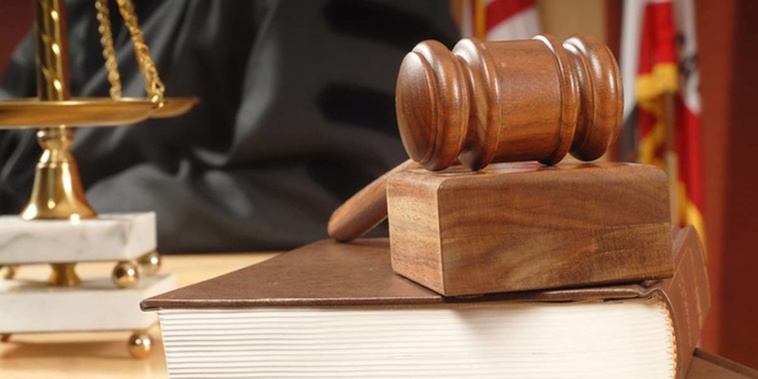
Climate change poses serious challenges across the globe. As these challenges intensify, so too does the search for effective solutions. In recent years, activists have increasingly turned to the courts to find them.
There has been a surge in climate change litigation over the years. We have had our fair share of it in New Zealand. The latest example is a case on which the Supreme Court issued a ruling on Wednesday.
The claim in a nutshell
Michael Smith wants to sue large-scale emitters using tort law. Torts are a system of laws that allows people to seek legal redress for harm done to them by others. The courts recognise many torts, including defamation, trespass and invasion of privacy.
The subjects of Smith’s claim are high-profile New Zealand businesses, including Fonterra, Genesis and Z Energy. He argues that because they have each contributed to climate change in a significant way, they should be liable to him under existing torts of public nuisance and negligence as well as a new tort of contributing to climate change.
Cases about whether there should be cases
When Smith filed his claim in the High Court the respondents sought to have it thrown out. The High Court refused, so they went to the Court of Appeal, which did say the claim should be thrown out. Yesterday, however, the Supreme Court overruled the Court of Appeal, which means the claim can go ahead.
Smith now has the right to bring his claim to trial.
Harm is not enough, you need to show causation
The prospect of holding individual businesses liable to individual claimants for their contributions to climate change is a bit mind boggling. We are not talking about a particular factory contributing to the particular pollution of a particular river. Global warming is, as the name suggests, a worldwide phenomenon involving countless sources of emissions.
When considering claims in negligence and nuisance, causation is a crucial consideration. Liability requires a clear demonstration that the defendant's actions directly led to the harm suffered by the plaintiff. We are not talking about contributions of a particular factory to the particular pollution of a particular river here. We are talking about a complex, global phenomenon.
Who emitted the carbon that damaged you?
Global warming has resulted from cumulative effect of a multitude of actors, big and small, that has led to the current state of the environment. By virtue of their own carbon footprints, individuals are complicit as well. That includes Smith, presumably, who emits carbon into the atmosphere by breathing.
It is very hard to see how causation could be fairly sheeted home to a discrete number of defendants selected by Smith. If Taylor Swift flies here in a private jet could Fonterra join her as another defendant? Could they counterclaim against Smith for all the electricity he uses?
No certainty one way or the other
The third proposed form of liability lacks specificity, making it challenging to ascertain whether causation would be necessary. Causation is a standard element in most torts; typically, it is not appropriate to hold people accountable for damage they did not directly cause. But we will just have to wait and see.
In any event, the Supreme Court has said that Smith’s claim can go ahead. This means it goes back to the High Court for a trial. It is likely that it will be many years before this litigation is fully resolved and clear legal principles are established.
Still, Smith can be reasonably confident. The era of courts cautiously extending the law in small increments seems to be a thing of the past when it comes to political issues. Judges are much more likely now to enthusiastically embrace their role as not just interpreters of the law, but also as active contributors to its creation and development.
The defendants should not take too much confidence in the precedential and common-sense hurdles that Smith has to clear. This is the same court that found that it was unjustified discrimination not to let 16-year-olds vote in elections. When it comes to liberal causes, the Supreme Court is not shy about making its views known.
Heads I win, tails you lose
Smith is bringing this claim in his private capacity but has also claimed that the matter is of significant public interest. He is also represented pro bono. In light of this, he has not sought costs from the defendants for his successful claim and has submitted that everyone should just pay their own legal fees.
This is very canny. While Smith may be represented pro bono, the same will not be true of the defendants. Given the complexity of the claim and the potential for extended litigation, the defendants will be facing eye-watering legal costs. The costs incurred for discovery alone will be in the millions, possibly with no prospect of recovery even if they succeed in defending the claim.
Smith, on the other hand, has no incentive for a timely resolution of the claim. And while you shouldn’t feel too badly for large corporate entities who rarely find themselves at a resource disadvantage, it does increase the likelihood of the matter dragging on and on.
Uncertainty is an investment killer
In the meantime, continuing uncertainty could have real impacts on the investment climate in New Zealand. Investors, domestic and international, need stable and predictable legal and regulatory environments. The prospect of significant liability for climate change-related damages, coupled with the lack of clear legal principles guiding such claims, introduces a level of risk that many investors will find too high.
Think about those thinking about investing in our energy and agriculture sectors. The possibility of being held liable for contributions to a global phenomenon, the specific causes of which are difficult to pinpoint, would not be comforting. It’s a situation that not only affects existing businesses, but also those considering entry into the market.
Isn’t this all in the ETS?
Parliament has, of course, enacted and maintains an emissions trading scheme. This has effectively licensed the emission of a certain quantity of greenhouse gases each year. The amount is capped and decreases over time.
So why do the courts need to do anything at all? Well, the emitters did argue that these types of claims are precluded because Parliament has already established a detailed legislative response. The Supreme Court was not convinced, however, and that question must also therefore be considered at trial.
Parliament should defend its prerogatives
The Supreme Court appears to be increasingly willing to venture into novel and impractical territory. As long as it continues pushing on an open door, it will do so with growing confidence. But a readiness to entertain claims that push the boundaries of traditional law and to venture into questions that are inherently political is unlikely to end well in the long run.
A short, sharp response could serve to make clear that it is the government, not the courts, who are responsible for formulating climate change policy in New Zealand. All it would take is a brief insertion into the Climate Change Response Act 2002 somewhere that provides as follows:
No person may bring any civil action against another person claiming damages or seeking a remedy based on the person's contributions to climate change.
Subsection (1) does not apply to civil actions related to non-compliance with other provisions of this Act or any other legislation regulating greenhouse gas emissions or environmental protection.
This isn’t about really about climate change
None of this minimises the imminent threat of climate change. It is just that Parliament should make clear, in no uncertain terms, that it exclusively determines New Zealand’s response. The compromises and horse trading needed to respond to the challenge is something that elected representatives of the people, not judges, need to be in control of.
It is well past time that Parliament made a statement about the separation of powers in New Zealand to ensure that each branch of government operates within its appropriate domain.
Take your Radio, Podcasts and Music with you









